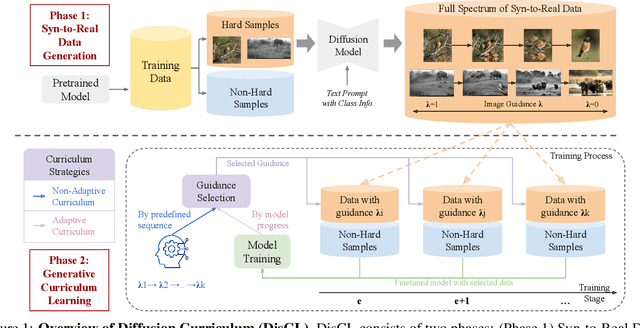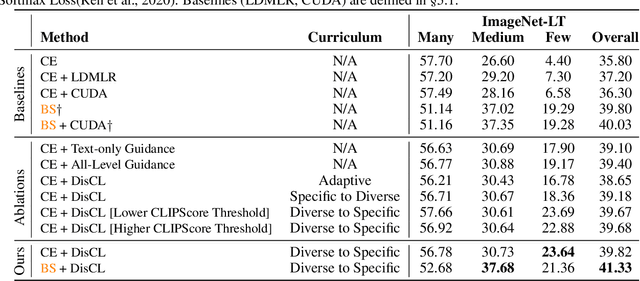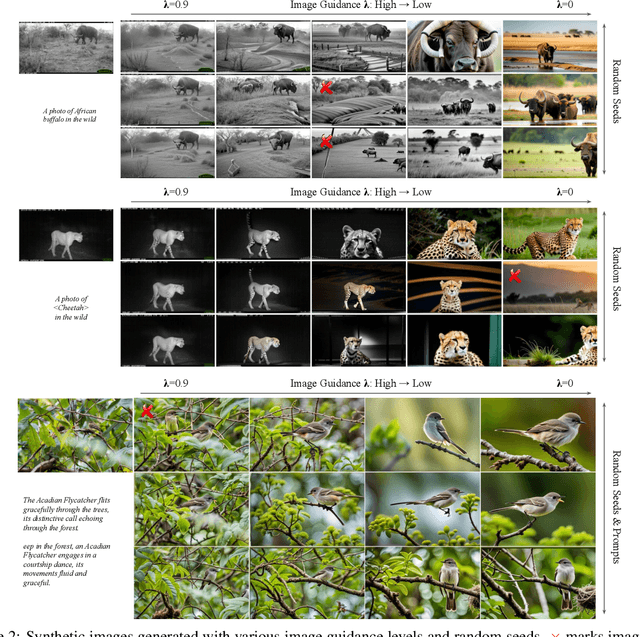Diffusion Curriculum: Synthetic-to-Real Generative Curriculum Learning via Image-Guided Diffusion
Paper and Code
Oct 17, 2024



Low-quality or scarce data has posed significant challenges for training deep neural networks in practice. While classical data augmentation cannot contribute very different new data, diffusion models opens up a new door to build self-evolving AI by generating high-quality and diverse synthetic data through text-guided prompts. However, text-only guidance cannot control synthetic images' proximity to the original images, resulting in out-of-distribution data detrimental to the model performance. To overcome the limitation, we study image guidance to achieve a spectrum of interpolations between synthetic and real images. With stronger image guidance, the generated images are similar to the training data but hard to learn. While with weaker image guidance, the synthetic images will be easier for model but contribute to a larger distribution gap with the original data. The generated full spectrum of data enables us to build a novel "Diffusion Curriculum (DisCL)". DisCL adjusts the image guidance level of image synthesis for each training stage: It identifies and focuses on hard samples for the model and assesses the most effective guidance level of synthetic images to improve hard data learning. We apply DisCL to two challenging tasks: long-tail (LT) classification and learning from low-quality data. It focuses on lower-guidance images of high-quality to learn prototypical features as a warm-up of learning higher-guidance images that might be weak on diversity or quality. Extensive experiments showcase a gain of 2.7% and 2.1% in OOD and ID macro-accuracy when applying DisCL to iWildCam dataset. On ImageNet-LT, DisCL improves the base model's tail-class accuracy from 4.4% to 23.64% and leads to a 4.02% improvement in all-class accuracy.
 Add to Chrome
Add to Chrome Add to Firefox
Add to Firefox Add to Edge
Add to Edge